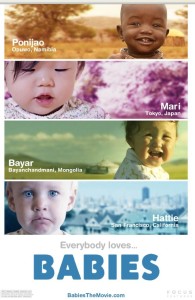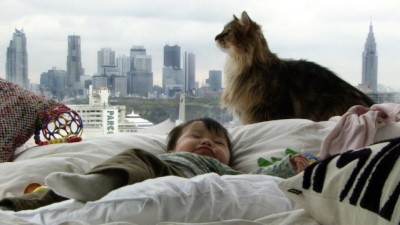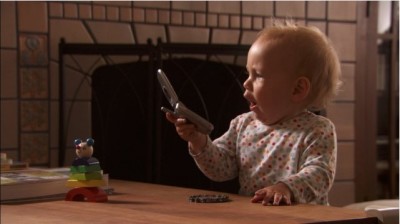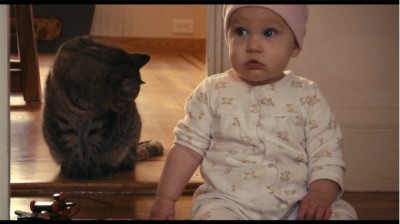By: debbie lynn elias

Who can resist the chubby little cheeks of a newborn? Or that sweet baby smell after a little one has had a bath and is all fluffed and powdered? And those giggles and coos? Doesn’t your heart just melt? It’s not just the parents whose hearts are stolen when one gazes onto the face of a newborn; almost everyone gets little smiley and weepy and wistful when they see innocent cuteness before them (of course, let’s admit it – not all babies are cute and not all evoke those “Oooh” and “Ahhhh” moments). And what about all those moments that you moms and dads miss; when you actually walk away from your little bundles of joy? How much cuteness do you not get to see? And as the days turn into weeks and months and your little angels begin morphing into real people, defining their own personalities, finding their own footing, do you find yourselves becoming less enamored as “cuteness” turns into exploration and development guaranteed to create a bigger mess than the dirtiest of diapers? Well, it’s that undeniable cuteness factor that director Thomas Balmes is counting on as he brings us, just in time for Mother’s Day, one of the most adorable documentaries you will ever see – BABIES.
Taking a more anthropological and tacitly entertaining viewpoint, BABIES looks at the lives of four innocents from birth to toddledom. Choosing subjects from four corners of the world, each with different educational and economic backgrounds, ethnicity and demographics, we concurrently take a look at each of the children starting with pre-birth and birthing preparations. Our journey begins in Namibia with the birth of Ponijao, moving onto Mongolia and the precious little Bayar. From there we meet Mari in Tokyo and ultimately, the blonde-haired, blue-eyed Hattie in San Francisco.
There is no dialogue, no narration or voice over, no script, simply giggles, coos, screams, laughter and an occasional offside from a parent. Using simply images, four delightful characters, their inherent curiosity and ingenuity, and the elements of the world around them, Balmes lets the story shape itself, juxtapositioning and capturing every known activity an infant, baby and toddler can encounter. We are also treated to an inside look into parenting skills among different cultures and are able to see first-hand the differences and/or similarities between not only parenting methods, but the growth and progress of each child.

While one would think that little Hattie would be the most advanced child given the economic, educational and medical advantages afforded her living in San Francisco, she poops, pees, sits, stands, drools, cries, crawls and toddles just like her counterparts despite her mother’s incessant super baby training with books and games designed to enhance the educational experience. As you will see, despite mom’s best efforts, and in spite of showing a one-year old a book entitled “No Hitting”, when Hattie is angry with mom, , she packs quite a good right wallop, repeatedly slapping mom’s face, something that intensifies when mom grabs the “No Hitting” book showing it to her. Personally, if I were Hattie, I would have been hitting mom, too. If anything, BABIES lets us know who it is that is in control – and it’s not the parents.
It’s interesting to watch the babies from four different cultures and see not only how similarly they develop but how their inherent inquisitiveness and resourcefulness plays into their development. I actually think Ponijao and Bayar show more intellectual advancement over Mari and Hattie. They are curious and look to the things around them to satisfy their curiosity. From that anthropological standpoint, the movie is extremely fascinating.

The cultural differences are interesting to observe. Ponijao’s head is bathed in a red ochre and shaved by mom with a knife. (Yes, you will cringe. I know I did.) Bayar lives in a yurt with his family, including an older sibling and farm animals, some of which like to venture into the yurt while Bayar ventures out undeterred by the mud on his hands and knees as he crawls across the expansive Mongolian countryside. As a baby, in what appears to be Mongolian custom, Bayar is tied up tighter than a papoose which lends itself to some quite entertaining moments involving a rooster and eventually, Bayar’s discovery of feet and toes (my favorite scene in the film). Simply priceless. As he gets older, it is quite common to see him sitting in the dirt surrounded by cows, getting beaten up by his brother or better still, having an interesting encounter with a roll of toilet paper. Child rearing in Tokyo seems more of a social event as Mari is forever surrounded by other babies and their mommies in group outings while her dad often appears to be a fish out of water. And while to American and European audiences Hattie may appear to have the most “normal” upbringing among our four little stars, as time moves on, the sense and acceptance of “normalcy” shifts and one can’t help but feel that the normalcy is really found in Namibia and Mongolia where children have fewer “luxuries” and are given more freedom to explore and cultivate on their own.

And while we all know that babies are fearless individuals, observing parents in action is quite another story. As Bayar wanders aimlessly in, around and under cows, or Ponijao tugs on goats, gets slapped around by siblings or climbs over the rockiest of natural playgrounds, no one bats an eye, while Hattie, falling into a sandbox at the end of a slide, gives dad pause for running, screaming and grabbing the child as if Armageddon was upon us.
But above all, we see BABIES. Babies, babies, babies, Cute, lovable, adorable babies. Babies with toys, books, rocks, sticks, animals, brothers, sisters, toilet paper, buckets, water – babies, babies everywhere. And the cute factor just keeps growing with each image, just filling your own heart with an aching love for these little ones.

Minimalistic and simplistic, the real pace setter of BABIES is Bruno Coulais’ score. With a happy-go-lucky feeling, each note is perfectly matched to the visual, be it the picturesque expansiveness of Mongolia or the red clay of Namibia or the concrete jungles of Toyko and San Francisco. The score serves as the transgression from scene to scene and milestone to milestone. I commend Balmes on his camera techniques which are generally low to the ground, keeping eye level with each baby, giving us the ratio perspective of each child. It reminds us just how big a place the world really is and enables us each to relive the wonder and awe of discovering this big new world. The cinematography of Jerome Almeras, Frazer Bradshaw and Steeven Petitteville is lush and vivid, exquisitely capturing not only the beauty of the world around each baby, but the beauty of each little life.

Absolutely charming, each baby is more of a scene stealer than the one before. The giggly, happy faces, feigned crying and tantrums, the resilience. . .you can’t help but love each one of these little rugrats. And while I am very glad that none of them are mine, it is a joy to watch them for 80 minutes and as with my own four nephews, turn them off and return them to their rightful owners, content to bask in the afterglow and fuzzy warmth of BABIES.
Ponijao
Bayar
Mari
Hattie
Directed by Thomas Balmes.











